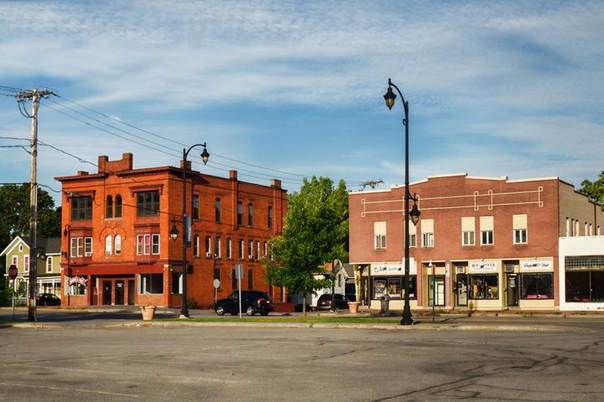
The Process of Filing a Personal Injury Claim in Monroe County
Getting hurt in an accident, whether it’s on I-490 during rush hour or while walking downtown near the Liberty Pole, can turn your entire world upside down. When it happens because someone else acted carelessly, New York law gives you the right to pursue financial compensation. But you can’t just jump into court. Filing a personal injury claim in Monroe County follows a step-by-step legal process meant to protect both your rights and the legitimacy of your case.

Understanding What Qualifies as a Personal Injury Claim
A personal injury claim begins when someone gets hurt because of another person’s poor decisions, or their failure to act responsibly. This doesn’t mean the person meant to hurt you. Most of the time, it’s about negligence: someone not doing what a reasonable person would do. The only way to know for certain is meeting with a seasoned personal injury lawyer who can advise you.
In Monroe County, the most typical personal injury cases include:
- Car accidents on Lake Avenue or Route 104
- Slips or trips at local businesses, like stores near Eastview Mall or Village Gate
- Injuries from defective products
- Medical mistakes at places like Strong Memorial Hospital
These aren’t criminal cases. You’re not asking the court to punish someone. You’re asking for money to help make up for what you’ve lost, your health, wages, and peace of mind.
Establishing Legal Standing and Time Limits
Not everyone can file a personal injury lawsuit. If you were the one injured, you can bring the claim. If your child was hurt or you lost a loved one due to someone’s actions, the legal right might pass to a parent, guardian, or estate representative.
Time is critical here. New York sets firm deadlines:
- Three years from the injury date for most personal injury claims
- Two and a half years for medical malpractice
- Ninety days to file a Notice of Claim if you’re suing a public agency like the City of Rochester
Once these deadlines pass, your case is usually over before it starts. Don’t wait. The legal clock doesn’t pause, even if you’re still recovering.
Gathering Evidence and Documentation
Building a strong case means having the right proof. The more detailed your documentation, the stronger your chances of a fair recovery.
Here’s what matters most:
- Police crash reports (get these from RPD or the Monroe County Sheriff)
- Photos showing your injuries, the vehicles, or conditions where you fell
- Hospital records, imaging reports, and billing statements
- Names and contact info for witnesses
- Pay stubs or letters from employers showing time missed and income lost
We use this evidence to prove two things: that someone else was at fault, and that their actions caused your injuries.
Notifying Insurance Companies and Potential Defendants
After an injury, you’ll need to let insurance companies know what happened. If it’s an auto accident, your no-fault insurance pays for immediate medical treatment and lost wages. But no-fault doesn’t cover everything. That’s where the at-fault driver’s liability insurance comes in.
Other situations might involve homeowner’s policies, business liability insurance, or even government self-insurance funds.
A word of caution: don’t give a recorded statement to any insurer before you talk to an attorney. These conversations can be used to limit what they pay you later on.
Hiring Legal Representation
You don’t need a lawyer to file a claim, but having the right one can make a major difference. A local personal injury attorney who knows how Monroe County courts operate can spot problems early and push your case toward the best outcome.
Here’s how it usually works:
- No upfront fees. Most attorneys work on contingency, taking one-third of your recovery if the case wins or settles.
- You can contact the Monroe County Bar Association Lawyer Referral Service for a free consultation referral.
We know the courtrooms. We know the adjusters. Most importantly, we know what it takes to help you get justice.
Pre-Filing Negotiation and Settlement Efforts
Many personal injury claims settle before a lawsuit is ever filed. After reviewing your case, your lawyer might send a demand letter to the at-fault party’s insurer. This letter spells out what happened, the injuries you suffered, and what you’re seeking in compensation.
If the other side sees that their client is clearly liable, they might offer a settlement. This avoids going to court, saving time and stress.
But if they push back or offer far too little, filing the claim becomes the next logical step.
Filing the Claim in Court
If negotiations fail, it’s time to file a formal lawsuit. Where you file depends on how much money you’re seeking:
- Supreme Court, Monroe County (at the Hall of Justice on Exchange Blvd) for claims over $25,000
- City Court or local Town Courts for smaller cases
Here’s what filing includes:
- Summons and Complaint—the documents that start the case
- Index number purchased from the Monroe County Clerk’s Office
- Service of process—you must notify the other side within 120 days
Once this step is complete, the legal process officially begins.
Defendant’s Response and Discovery Phase
After your claim is filed and served, the defendant has about 20 to 30 days to respond with an Answer. This document admits or denies your allegations and lays out their defenses.
Then, both sides begin discovery, where information is shared to prepare for trial. This includes:
- Written questions (interrogatories)
- Requests for documents
- Depositions—live, recorded questioning under oath
- Independent medical exams (IME) by doctors chosen by the defense
This stage often reveals whether the case should settle or go all the way to trial.
Settlement Conferences and Mediation
Before trial, the court usually requires settlement conferences. These happen at the Monroe County Supreme Court and involve the judge encouraging both sides to reach a resolution.
You may also be referred to the court’s ADR program, which includes mediation and arbitration.
Benefits of mediation include:
- Faster resolution
- Lower legal expenses
- Private discussions, not public courtroom drama
These tools help streamline your case and can bring closure without the pressure of a jury trial.
Trial Process (If Settlement Fails)
If the case doesn’t settle, it moves to trial. The process follows these steps:
- Jury selection at the Hall of Justice
- Opening statements by both sides
- Testimony from witnesses and experts
- Closing arguments
- Jury deliberation and verdict
If you win, the jury can award damages for things like medical bills, future care needs, lost wages, and pain and suffering. It’s a detailed process, but your attorney handles the legal work while you focus on healing.
Appeals and Post-Judgment Procedures
Not every trial ends with a clean resolution. If one side believes the judge made a serious legal error, they can appeal the case. Appeals go to the Fourth Department of the Appellate Division, located right in Rochester.
Other post-judgment issues might include:
- Adding interest to delayed payments
- Liens from health insurers or Medicaid that must be repaid
- Structured settlements that pay out over time
Even after a win, legal guidance helps protect the money you’ve worked so hard to recover.
Recovering and Managing Compensation
A successful claim can include different types of damages:
- Economic: medical bills, rehab costs, lost earnings
- Non-economic: emotional distress, physical pain
- Punitive: rare, but awarded if the defendant’s behavior was especially reckless
Be careful once the money arrives. Settlement funds may be subject to liens from hospitals or insurers. You may also need help managing lump-sum payments, especially if you're still unable to work.
Special Situations: Claims Against Government Entities
When the government is involved, the rules change.
If you’re suing the City of Rochester, Monroe County, or a New York State agency, you need to file a Notice of Claim within 90 days of the injury. The full lawsuit must then follow within one year and 90 days.
Some common government-related claims include:
- Falling on icy sidewalks near public buildings
- Accidents involving RTS buses or municipal vehicles
- Injuries caused by poorly maintained roads
Missing these deadlines can end your case before it begins.
How Local Courts Streamline Personal Injury Cases
Monroe County Supreme Court uses specialized systems to keep things moving. There are designated parts for:
- Motor vehicle accidents
- Medical malpractice
- General negligence claims
Most filings now go through the NYSCEF e-filing system, which speeds up communication between attorneys, judges, and the court.
The court also schedules mandatory settlement conferences to reduce case backlog and encourage resolution without trial.
Take Steps Towards Justice
Filing a personal injury claim in Monroe County takes more than just telling your story. It’s a legal process, step by step—from gathering evidence, to potential settlement, to trial if needed. Understanding each stage helps protect your right to compensation and your future.

What Sets Us Apart From The Rest?
Horn Wright, LLP is here to help you get the results you need with a team you can trust.
-
Client-Focused ApproachWe’re a client-centered, results-oriented firm. When you work with us, you can have confidence we’ll put your best interests at the forefront of your case – it’s that simple.
-
Creative & Innovative Solutions
No two cases are the same, and neither are their solutions. Our attorneys provide creative points of view to yield exemplary results.
-
Experienced Attorneys
We have a team of trusted and respected attorneys to ensure your case is matched with the best attorney possible.
-
Driven By Justice
The core of our legal practice is our commitment to obtaining justice for those who have been wronged and need a powerful voice.

